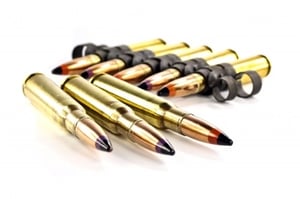I recently had a lengthy discussion with someone from the UK Armed Forces who was preparing to lead his men into a dangerous part of the world. I enquired about the logistics of delivering people, arms, ammunition and machines to the right place at the right time. Running out of anti-dandruff shampoo may prompt you to select a white shirt in the morning but running out of bullets when under fire provides a very different challenge.

Taking bullets as the focus. Getting bullets to the front and keeping up the supply lines must be an incredible logistical task which simply cannot fail. Just imagine, no weekends or bank holidays to allow the supply chain to catch up or regroup. All FMCG supply chain people will have all had the dubious privilege to call Metro or Asda or Tesco to say “sorry, we are out of stock on Bloggo Powder but it will be with you on Tuesday”. The supply chain in an active military deployment must be a super-slick Rolls-Royce of an organisation……..not!
Well, actually my friend rated the quality of supply chain in the military as ………. Yes, you can probably guess the short but not so sweet military technical term used. Quite simply, the military supply chain does not have to make money or deliver savings nor is it measured against customer service at the often dusty location of a fire-fight. They are tasked to get stuff from A to B and get it there they must or the consequences are potentially lethal. Consequently the military spends far more than is necessary in civilian life to achieve the similar objective of moving stuff around.
FMCG, Brewing and Pharma companies find it hard enough to forecast what domestic consumers will eat, drink and slap on their skin on a daily basis. Compare that to how many bullets are needed or what volume of diesel fuel is required or how many tank tracks are going to be ripped off. If military forecast accuracy and stock levels were the subject of KPIs then the turnover of supply chain people would be very high. So, cost in a military environment may not receive close scrutiny but in FMCG, Brewing and Pharma it certainly and rightly does.
This leads me to this thought. In the relatively mundane field of soaps and shampoos, beer and Bollinger, tablets and tonics, does cost excellence deliver performance excellence or is it the other way around……..?
Image courtesy of Surachai at FreeDigitalPhotos.net







